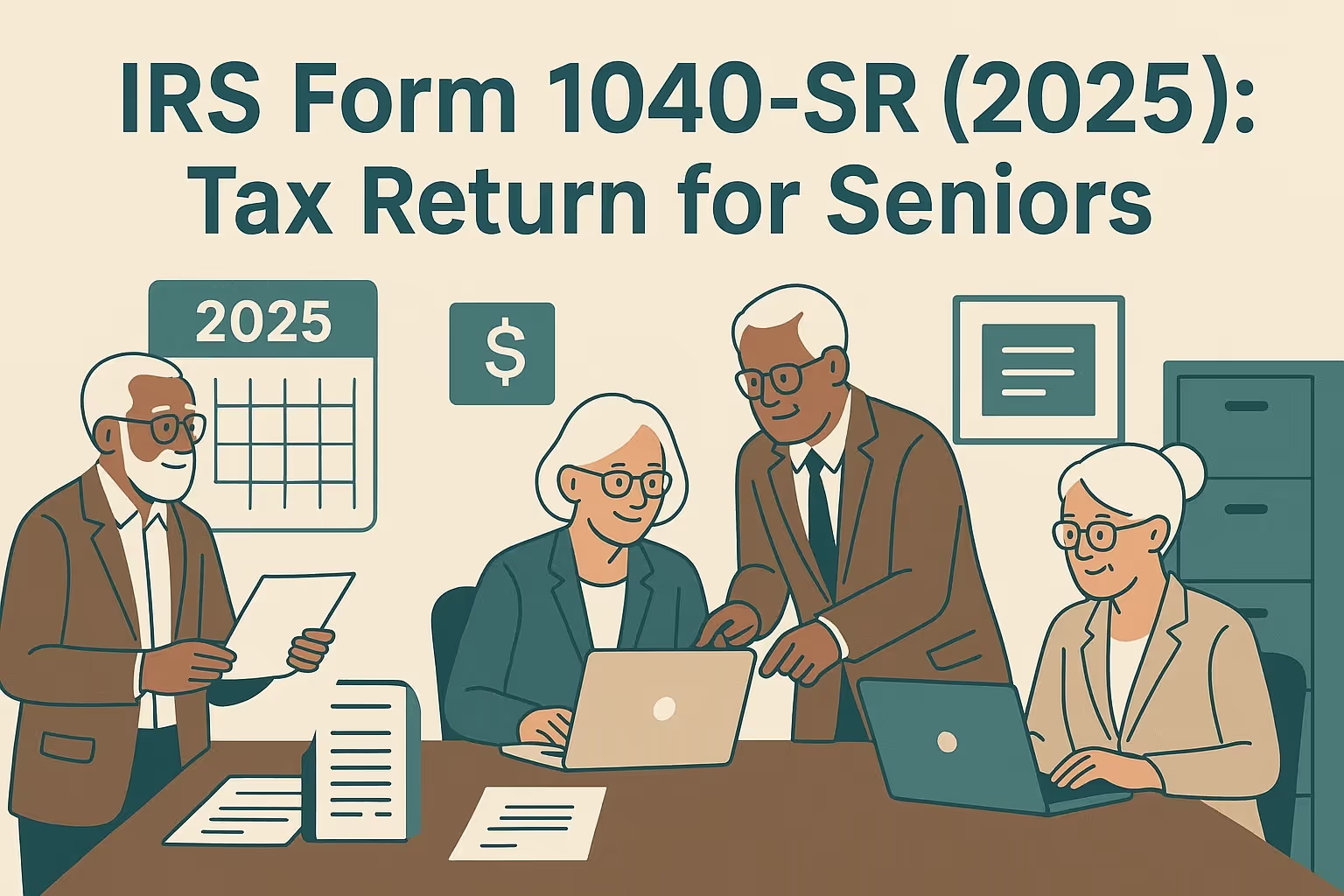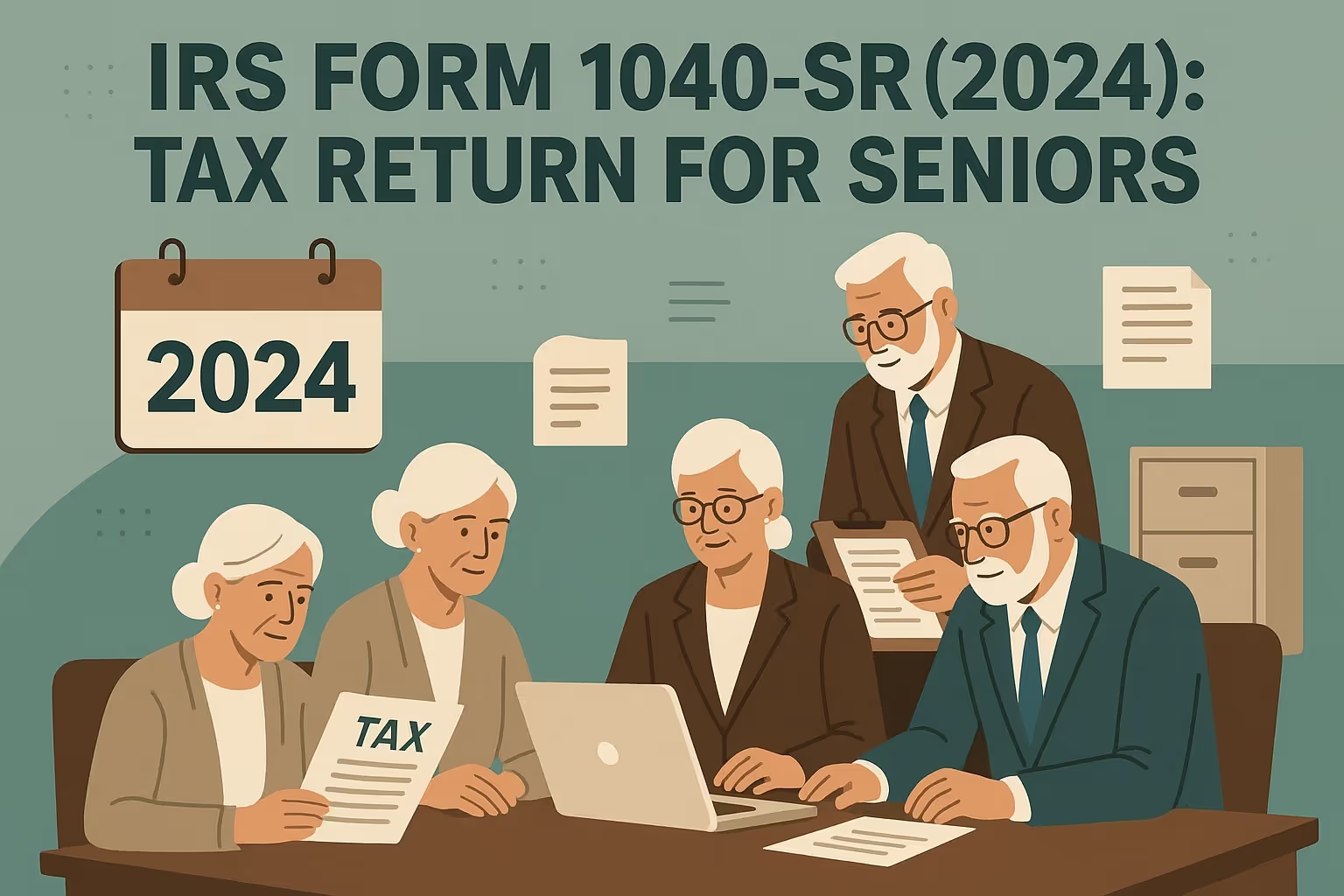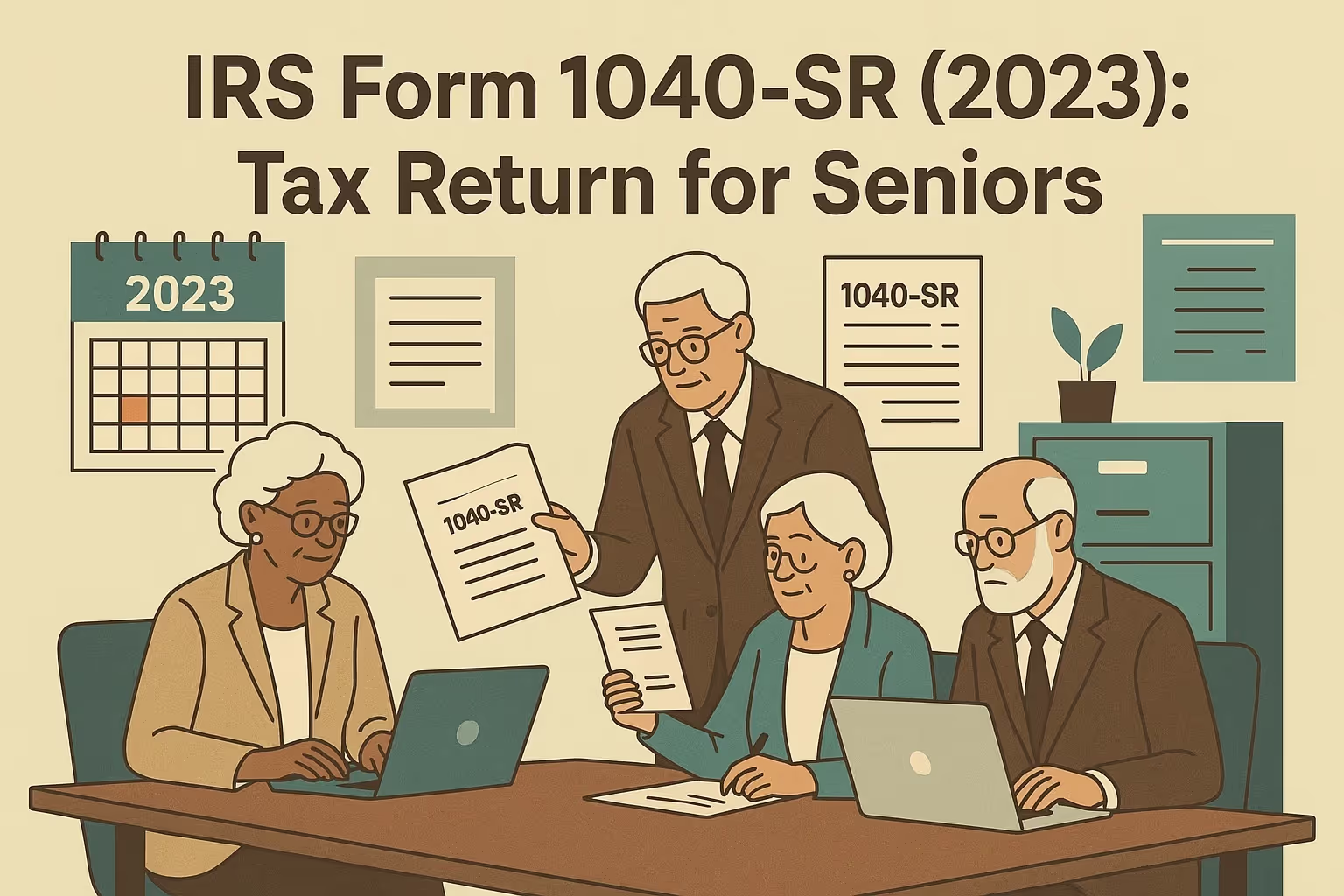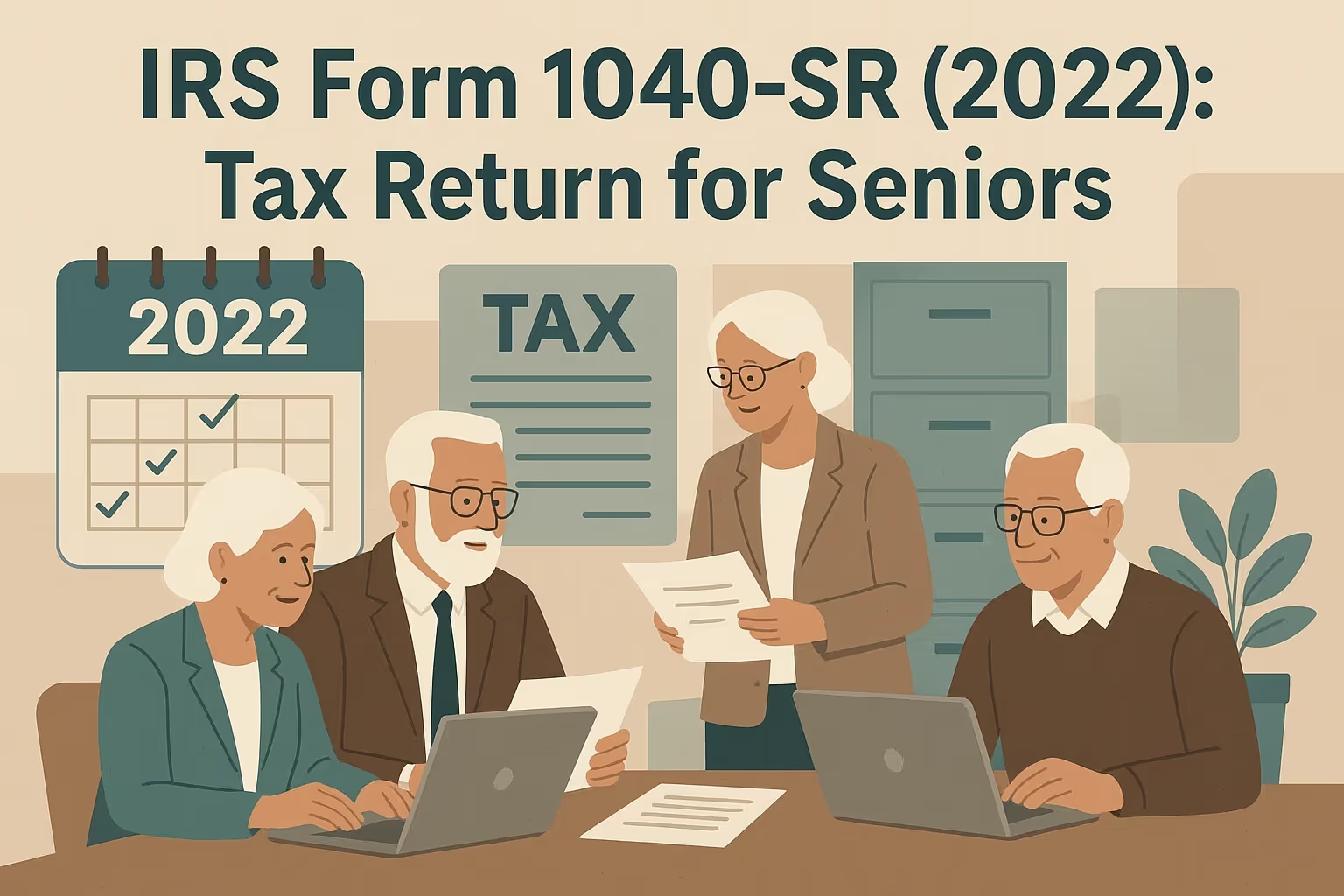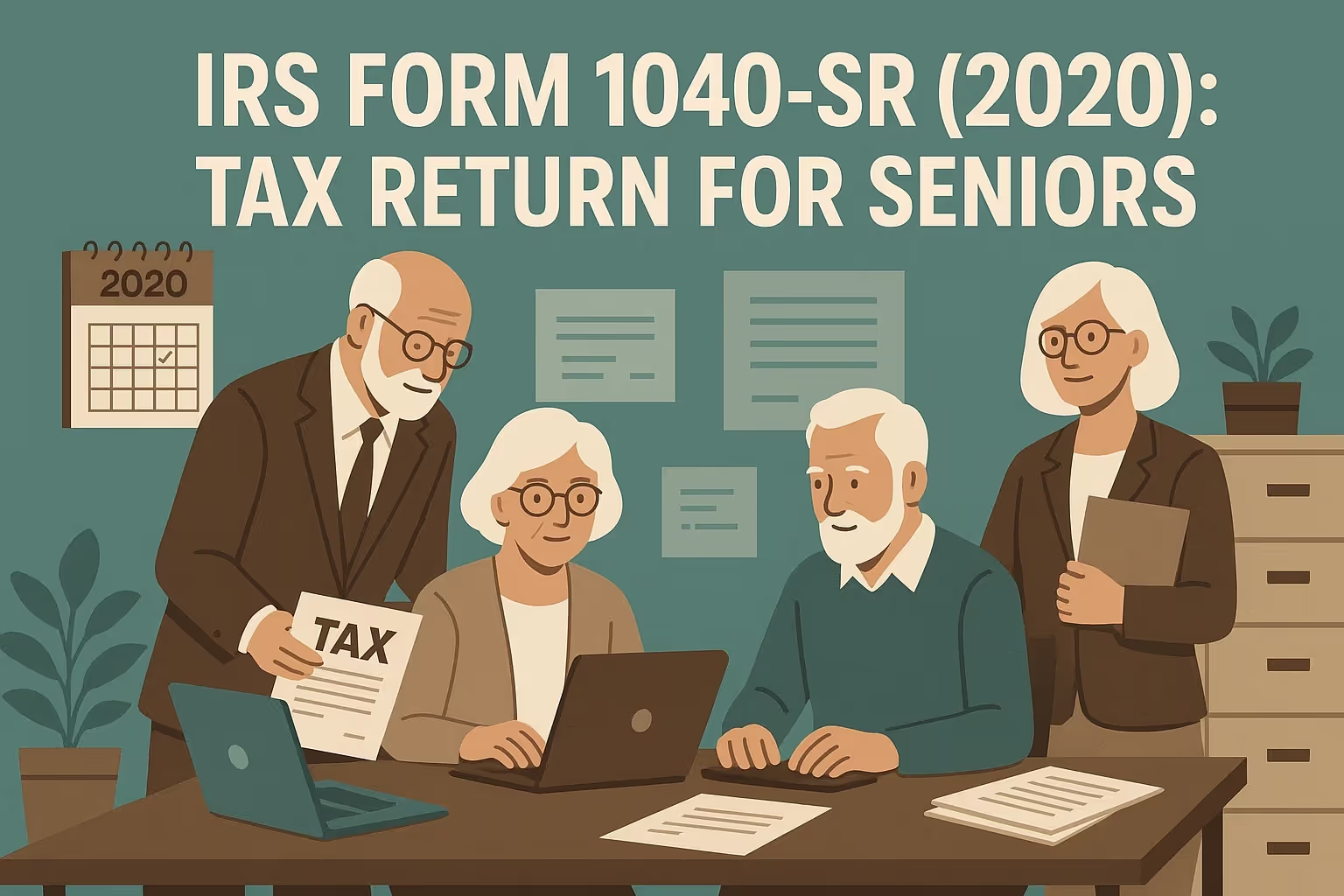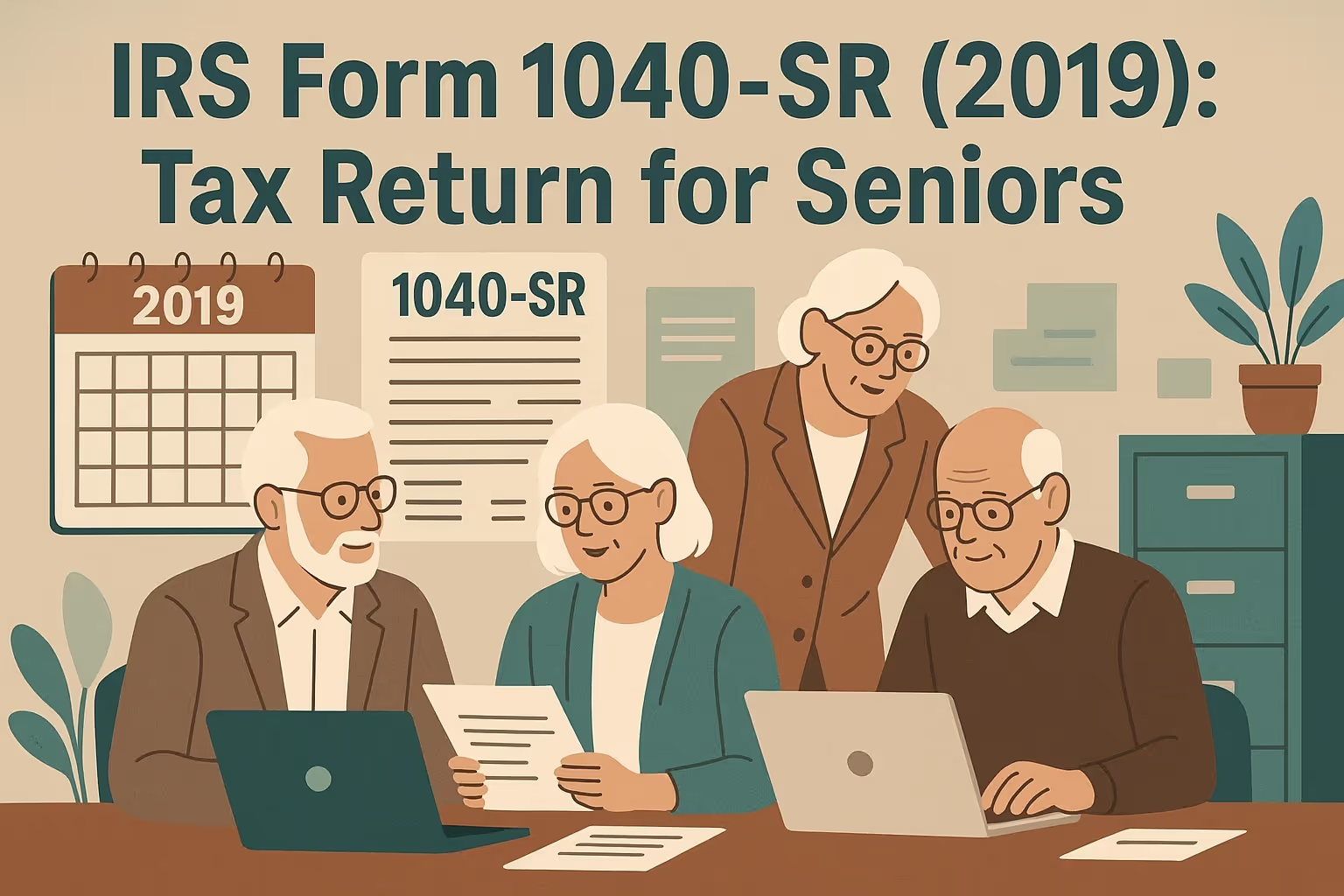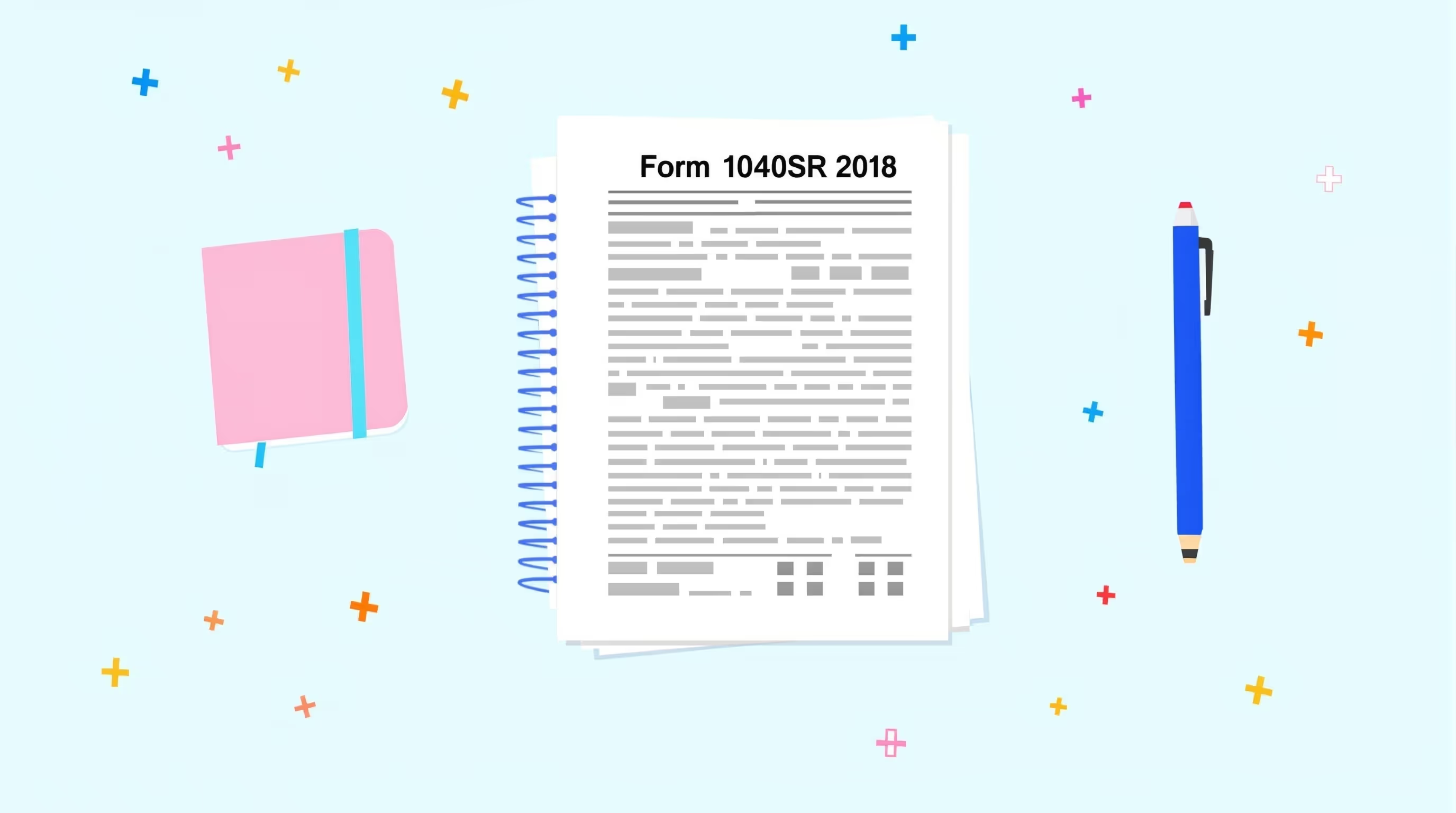IRS Form 1040-SR (2021): Tax Return for Seniors
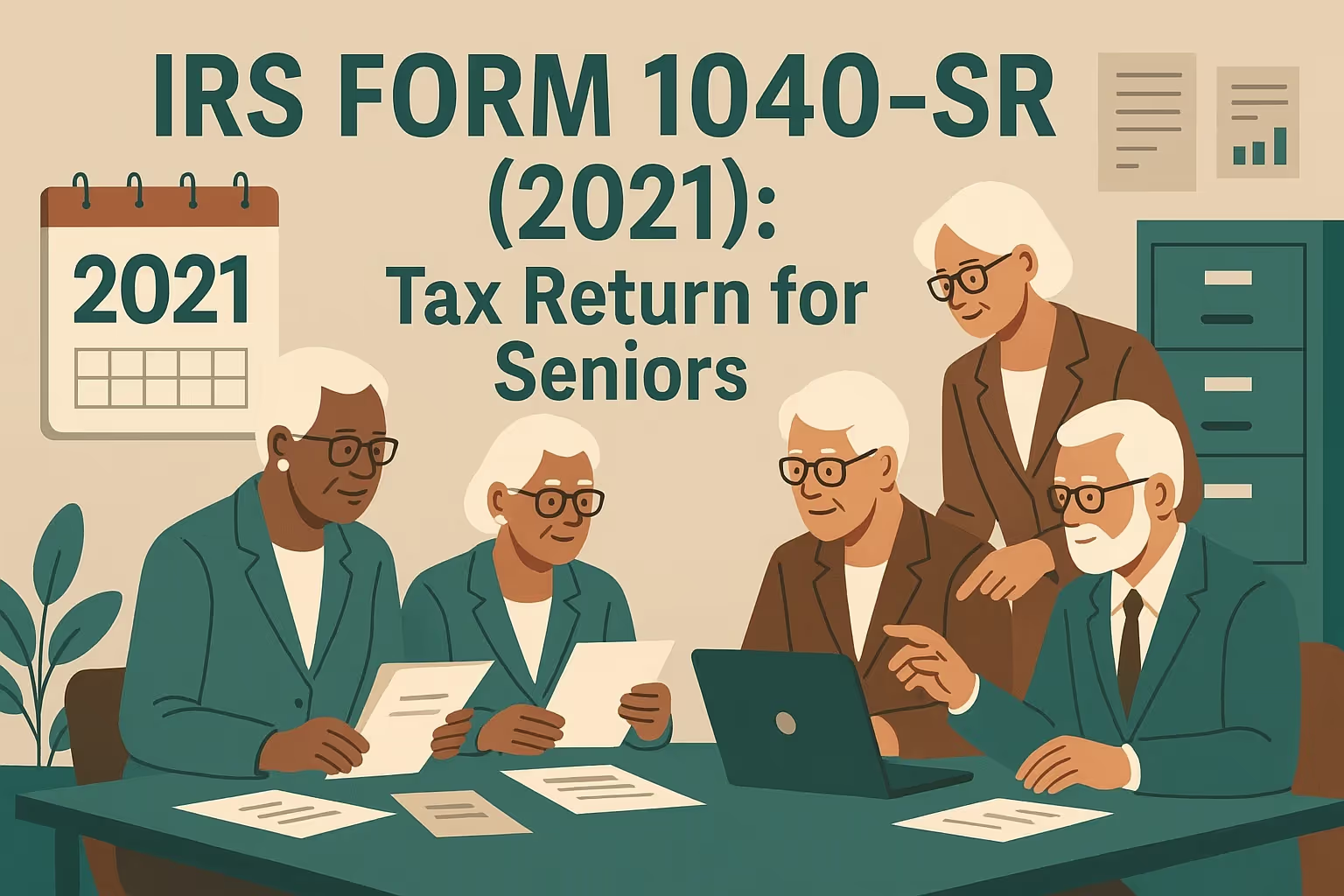
What IRS Form 1040-SR (2021) Is For
IRS Form 1040-SR (2021) is the U.S. Tax Return for Seniors. It is available to taxpayers born before January 2, 1957, meaning they were age 65 or older at the end of 2021. The form follows the same income tax rules as the standard Form 1040 but offers larger print, a simplified layout, and an easy-to-read deduction chart, making it more accessible for older taxpayers.
Seniors can use this form to report earned income, itemized deductions, and credits. It is beneficial for individuals who need a clear and straightforward way to file or amend their 2021 tax return.
When You'd Use Form 1040-SR for 2021 (Late or Amended Filing)
Form 1040-SR for 2021 is used when you file a late return, amend your return, or correct previously reported information on your tax return. Taxpayers who received an IRS notice, discovered unreported income, or missed the original deadline can still file. Refund claims for 2021 must be submitted by April 18, 2025, due to the IRS's three-year statute of limitations.
- Refund filers face no penalty; however, late payments may accrue interest and additional charges.
- Those who owe taxes must file and pay promptly to reduce penalties.
- Always sign and date your return before mailing. Unsigned forms are not valid.
If you didn’t file your 2021 tax return, the IRS still allows you to submit unfiled federal returns to claim refunds or correct missing information.
Key Rules Specific to 2021
- The standard deduction for 2021 is $12,550 for single filers, $25,100 for married couples filing jointly, and $18,800 for heads of household.
- Seniors receive an additional deduction of $1,700 if filing as single or head of household and $1,350 per spouse age 65 or older if filing jointly.
- The Earned Income Tax Credit (EITC) may apply if you had qualifying earned income during the 2021 tax year.
- The Recovery Rebate Credit can be claimed by taxpayers who did not get the full amount of their 2021 stimulus payment.
- Charitable contributions up to $300 ($600 for married couples filing jointly) can be deducted even if you do not itemize deductions.
Step-by-Step (High Level)
1. Gather documents
Collect W-2s, 1099s, Social Security statements, and all 2021 income tax documents. If any are missing, request transcripts from IRS.gov (look for the locked padlock icon to access your account securely).
2. Complete Form 1040-SR
Use only the official 2021 IRS form and follow the instructions provided. Enter your income, deductions, and any credits you qualify for.
3. Attach schedules
Include any required schedules such as Schedule A for itemized deductions, Schedule C for self-employed business income, and Schedule D for investment details.
4. File the return
Mail your completed forms to the IRS address listed for the 2021 tax year. Some software may still allow e-filing for past returns, but paper filing is often required.
5. Keep records
Store copies of all forms, receipts, and proof of mailing as evidence of your records. This information may be required later if the IRS requests verification or if you need to amend your return.
Download the correct 2021 version of Form 1040-SR and related instructions from the IRS Form Help Center to avoid mistakes.
Common Mistakes and How to Avoid Them
- Using the wrong tax year’s form: Always ensure you are using the 2021 version of Form 1040-SR and related schedules to avoid incorrect calculations or processing delays.
- Forgetting to claim senior deductions: Check that you have added the extra deduction amount available to taxpayers age 65 and older. This can increase your refund or reduce the tax that you owe.
- Missing the refund deadline: Be aware that refund claims for the year 2021 must be filed by April 18, 2025. Filing after that date means forfeiting any refund to which you are entitled.
- Errors in credit calculations: Double-check your figures for the Recovery Rebate Credit and Earned Income Tax Credit to ensure accuracy and prevent rejection of your return.
- Not reporting all income: Include all sources of income, such as wages, self-employed earnings, retirement distributions, and investment gains, to avoid IRS notices for underreporting.
- Failing to sign or date the return: Sign and date your form before mailing, since the IRS will not process unsigned returns.
Filing before April 18, 2025, allows you to reclaim any refund from overpaid taxes. For more on how to avoid refund issues, see our refund recovery tips.
What Happens After You File
The IRS typically processes late paper returns within six to eight weeks. Refunds are issued to the bank account or address listed on your return. If taxes are owed, the IRS will send a notice showing the balance due, including interest and penalties.
If you cannot pay in full, you can apply for an installment agreement using Form 9465 or set up a payment plan online. Filing on time, even without full payment, helps limit additional charges and protects your account from further action.
FAQs
Can I still receive a refund for my 2021 taxes if I file my return late?
Yes, you can still claim a refund if you file by April 18, 2025. After that date, the statute of limitations prevents the IRS from issuing refunds. Filing within this time ensures you receive any money owed from overpaid taxes or credits.
What penalties will I owe for filing my 2021 return late?
If you owe taxes, the failure-to-file penalty is 5% of the unpaid taxes per month, up to a maximum of 25% of the unpaid taxes. The failure-to-pay penalty is 0.5% per month, plus interest. Refund filers face no penalties, but waiting too long can mean losing your refund entirely. If you have a clean filing history, you may qualify for IRS penalty abatement to reduce or eliminate late-filing penalties.
Do I need my original 2021 tax documents to file a late return?
Original W-2s, 1099s, and other records are ideal, but you can still file using IRS wage and income transcripts. These records show the income reported to the IRS and can be requested online. Having accurate information prevents mistakes on your tax return.
Should I amend my state tax return if I'm filing a late 2021 federal return?
Yes, in most cases, you should. If your federal numbers change, your state return usually must be updated. Check your state’s requirements, since each has its own filing rules and time limits.
Can I e-file a 2021 return in 2024 or a later year?
Some tax software may still allow electronic filing for older tax years, but most 2021 returns must be submitted by mail. Use the mailing address provided in the 2021 Form 1040-SR instructions and send it by certified mail to confirm timely filing.
What if I can't pay the full amount I owe on my 2021 return?
Always file, even if you can’t pay in full. Apply for a payment plan online or submit Form 9465. Paying what you can reduces interest and penalty amounts and keeps your account in good standing. If you need time to pay, you can set up one of several IRS payment plans to spread out the balance over time,
How long do I have to file an amended 2021 return if I made an error?
You generally have three years from the original filing date or two years from the date you paid the tax, whichever is later. For most taxpayers, this means you can amend your 2021 return until April 18, 2028.
















